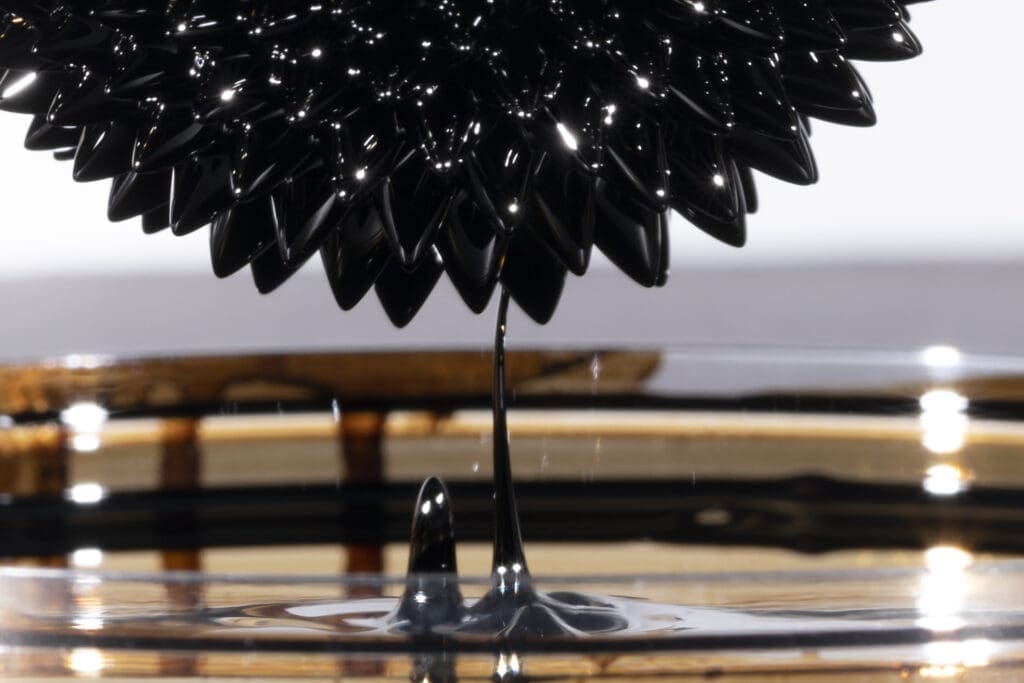
Kreosotum
Latin name: Kreosotum
Short name: Kreos
Common name: Kreosote | Beechwood Tar | Wood Tar Oil
Primary miasm: Syphilitic Secondary miasm(s): Sycotic
Kingdom: Minerals
Family: Tar distillate (Phenolic compound)
- Symptomatology
- Remedy Information
- Differentiation & Application
Kreosotum is a distillation product of wood tar, particularly from beechwood, consisting mainly of phenolic compounds such as guaiacol and creosol. It is a corrosive, pungent liquid known for its strong antiseptic and preservative properties. In homeopathy, Kreosotum exhibits a profoundly irritating action on the mucous membranes, especially the female genital tract, gums, urinary system, and respiratory passages, and holds a key place in ulcerative, haemorrhagic, and putrid states.
Historically used as a preservative for meat and wood, and as an antiseptic for wounds and dental care in the 19th century
First proved by Stapf and later verified clinically by Hering, Jahr, and others. Symptoms confirmed through toxicological accounts and clinical cases.
- Female genitalia – ulceration, leucorrhoea, haemorrhage
- Teeth and gums – rapid decay, swelling, bleeding
- Urinary tract – irritation, incontinence, excoriating urine
- Respiratory tract – hoarseness, rawness, ulcerative tendencies
- Digestive tract – nausea, vomiting of blood
- Skin and mucous membranes – burning, ulceration, offensive discharges
- Mind – anxiety, restlessness, especially at night
- Female genitalia – ulceration, leucorrhoea, haemorrhage
- Teeth and gums – rapid decay, swelling, bleeding
- Urinary tract – irritation, incontinence, excoriating urine
- Respiratory tract – hoarseness, rawness, ulcerative tendencies
- Digestive tract – nausea, vomiting of blood
- Skin and mucous membranes – burning, ulceration, offensive discharges
- Mind – anxiety, restlessness, especially at night
- Warmth of bed
- During menstruation and pregnancy
- Evening and night
- After coition
- Touch or pressure
- Suppressed discharges
- Dentition in children
- Sepia – Leucorrhoea worse after menses, but less acrid and not haemorrhagic
- Mercurius – Offensive discharges and ulceration, but more glandular involvement
- Arsenicum album – Burning pains, but with more restlessness and anxiety
- Nitric acid – Acrid discharges and bleeding, but more stitching and splinter-like pains
- Sulphur – Acrid, offensive discharges, but more constitutional heat and burning
- Calcarea carb – Children with dental issues, but less offensive discharges
- Complementary: Sulphur, Lycopodium, Calcarea carb
- Antidotes: Nux vomica, Camphora
- Follows well: Sepia in chronic uterine affections
Kreosotum represents a state of acrid discharge, ulceration, and erosion—both physical and emotional. The patient feels corroded by her own internal fires: burning pains, putrid secretions, and emotional anguish. Its sphere is one of oversensitivity—to physical pain, emotional insult, and internal dysfunction. It is especially suited to women who feel disrespected or sullied, manifesting this as gynaecological pathology. The essence is burning, both literal and symbolic.
- Top remedy for ulcerative cervicitis with burning and bleeding
- Use in children with rapid tooth decay, even before teeth erupt
- Valuable in offensive leucorrhoea, especially excoriating
- Helpful in incontinence in elderly women
- Consider for burning haemorrhoids with offensive discharge
Mind
- Anxiety, evening
- Sensitive to noise
- Dread of being alone
Teeth
- Decay before eruption
- Pain during menses
- Sensitive to warmth
- Female Genitalia
- Leucorrhoea acrid, excoriating
- Haemorrhage, dark, clotted
- Burning after coition
Urine
- Incontinence, night
- Burning, excoriating
- Frequent, small quantities
Skin
- Ulcers, offensive
- Burning, itching eruptions
- Excoriation in folds
- Samuel Hahnemann – Chronic Diseases: Primary proving symptoms and notes on ulceration
- J.T. Kent – Lectures on Homoeopathic Materia Medica: Female complaints, mental picture
- William Boericke – Pocket Manual: Clinical emphasis on dental decay, acrid discharges
- C. Hering – Guiding Symptoms: Ulcerative affections and urinary details
- John Henry Clarke – Dictionary of Practical Materia Medica: Expanded gynaecological and urinary symptoms
- Allen’s Encyclopaedia: Toxicological symptoms and broader clinical contexts
